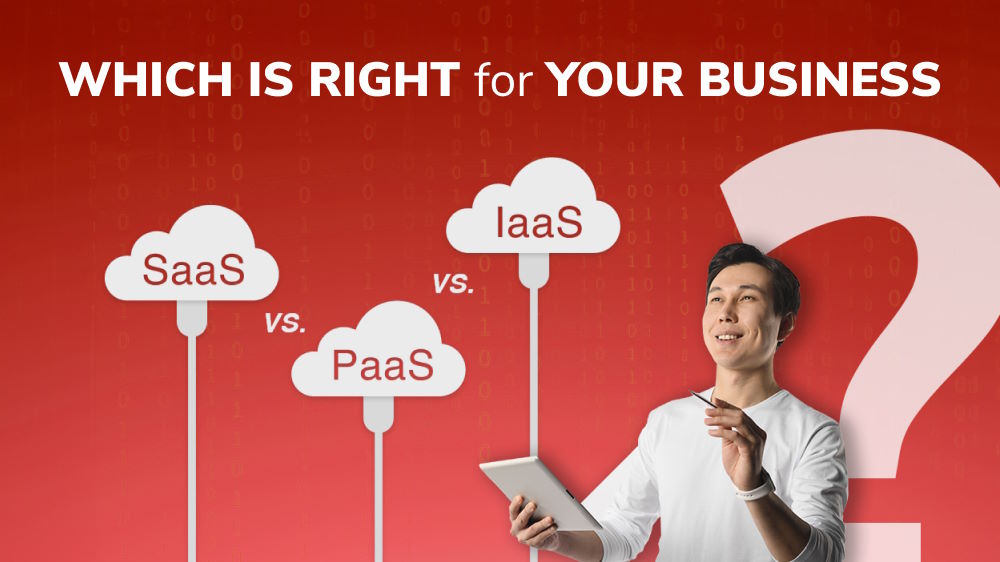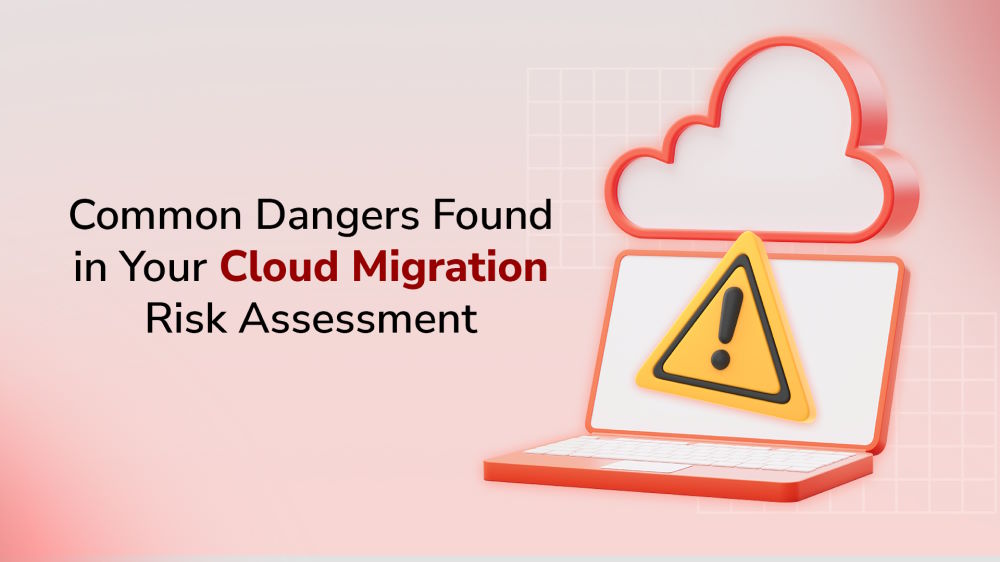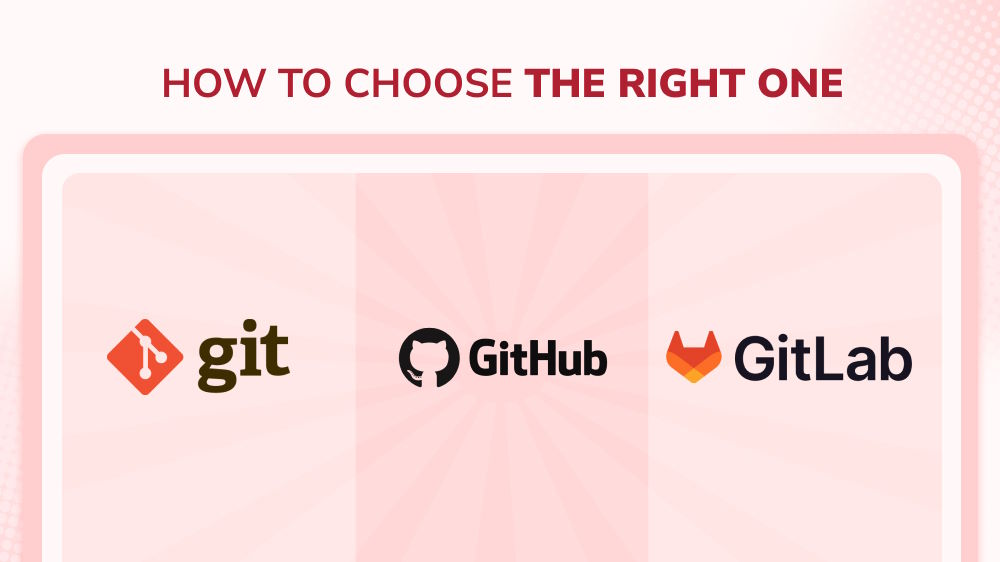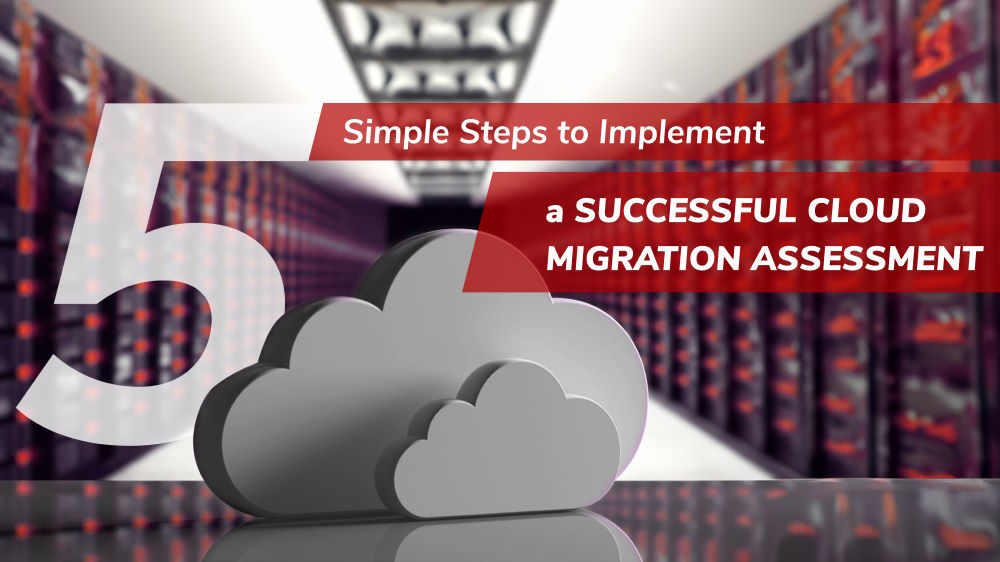
What Is Cloud-based Application Development?
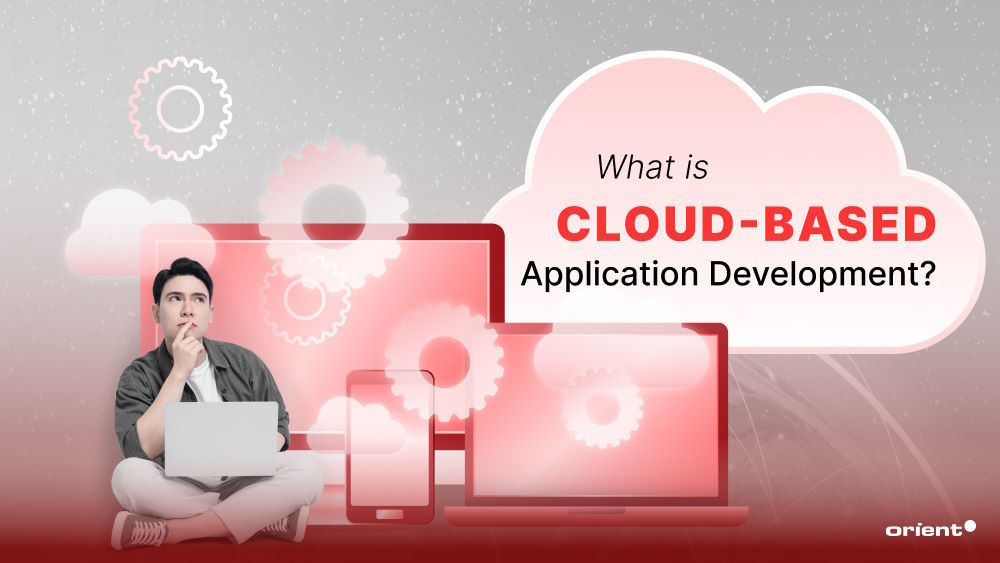
Content Map
More chaptersCloud-based Application Development is the process of creating and executing software applications on cloud platforms.
What is Cloud Computing?
Cloud computing is the concept of using a network of computers to store, manage and process data. Cloud Computing uses a “pay as you go” model that allows users to pay only for the services they use.
There are many advantages of cloud-based application development, including low initial capital for setting up data centers, sharing data across geographically dispersed locations, scalability, and easy access from anywhere.
The main advantage is the ability to tap into a shared pool of configurable computing resources, such as servers, storage, and networking. This allows for faster innovation and new services at a lower total cost.
Cloud-Based Application Development Architecture
Cloud application development can use many different software architectures, including microservices, monolith, SOA, functions, and more. Each architecture has various features for building scalable applications that are easier to maintain and enhance over time.
When selecting an architecture for a cloud application development strategy, organizations should consider the following factors:
- Scalability in terms of responsiveness, load handling, and data storage.
- Ability to enable future scenarios by adding new capabilities without significant impact on the architecture.
- Ability to add and change features without affecting other components in the architecture.
- The simplicity of coding and deployment.
- Flexibility to accommodate changes in business requirements.
- Ability to meet performance and security standards.
Microservices Architecture
A modern approach for building distributed cloud-based applications is the microservice architecture. The microservices architecture enables developers to implement applications as a suite of independently deployable microservices.
Each microservice is small, highly scalable, and supports a specific business function. The microservices architecture is more resilient to failure than traditional monolithic architectures.
Monolithic Architecture
The monolithic application architecture is the traditional approach for building cloud-based applications. The monolithic application architecture deploys all components of the application as a single unit.
This approach yields large and complex code bases that are difficult to maintain and enhance.
Monolith architecture can be challenging to scale. For example, if one part of the application has a performance problem, then it is challenging for developers to find the root cause.
Functions and Lambda Architecture
Many cloud-based applications use a function or lambda architecture. In this approach, the application consists of many serverless compute containers functions. The functions are lightweight and require less maintenance than a traditional web or mobile application.
Service-Oriented Architecture (SOA)
Another approach for building cloud-based applications is service-oriented architecture. In the service-oriented application architecture, each component is a service that can be accessed remotely.
The services are loosely coupled together and communicate over the network. Thus, modern architectures like microservices are built on top of service-oriented architecture
Cloud Application Development Vs. Traditional Application Development
The most significant difference between traditional and cloud application development is that cloud-based applications have access to many resources and services. Therefore, it affects the way we architect and design applications so that they can take advantage of the features and benefits provided by cloud platforms.
In a traditional application, companies have to buy and manage their servers no matter how big or small the application is. Cloud-based applications do not need to incur this upfront cost.
Moving an application to the cloud also typically means that you don’t need to worry about server management, such as getting new servers when your existing ones max out or allocating new ones for your growing app.
Serverless Computing
With serverless computing, developers don’t have to think about the infrastructure. Instead, they only have to focus on writing the code.
The cloud provider takes care of provisioning and managing servers, containers, and other computing resources and scaling to meet demand without any downtime.
Serverless computing can be a more cost-effective approach for deploying business applications because it eliminates idle capacity. In addition, the absence of server management responsibilities defines it.
Cloud Services
Cloud services are well-defined components that can be easily integrated with other cloud services. It provides the basic building blocks for you to build enterprise-grade cloud applications and platforms quickly.
When developing cloud-based applications, cloud services form the foundation for platforms and solutions. They are designed to expose specific functionality, such as user management, content management, messaging, notifications, data management, and media services.
Application Gateway
Application gateways provide a single point of entry to a cloud application. In addition, they allow for load balancing and access management, and security functions such as encryption and authentication.
Load Balancers
Load balancers distribute incoming requests across multiple servers. The advantage is that they can also check the health of servers and route around any failures.
Kubernetes
Kubernetes is an open-source platform for automating cloud deployments and managing containerized applications. It provides a way to package an application with its dependencies into a single unit deployed on the cloud. In addition, it provides tools for scaling cloud applications, load balancing, and auto-repairing issues when they arise.
SQL Databases
Managed SQL databases are a popular cloud service. They provide a relational database for storing and retrieving data from within cloud applications. Automatic upgrades and backup management are key advantages of using managed database services.
NoSQL Databases
Managed NoSQL databases offer storage flexibility and high performance. Cloud-based application development often uses NoSQL databases because they can handle large data sets and multi-structured data more efficiently than traditional relational databases.
Big Data
Cloud platforms handle large sets of structured and unstructured data that can’t fit on a single server or disk.
Big data deals with large and complex data that can’t be processed using traditional relational databases. Big Data analytics help you get more value from your data by combining it with other sources and then finding insights that inform business decisions.
Message Brokers
Messaging services allow cloud apps to communicate with each other through the use of messages. They are an ideal way for applications to share data and process information. Using a messaging service is a must for microservices-based architectures to handle application events and perform asynchronous tasks.
Cache Services
A cloud-based application development strategy includes caching because it provides faster access to data. The most common type of cached data is read-only content that can be accessed frequently by applications, such as images, HTML files, style sheets, scripts, or other static content.
Caching can improve the performance of a cloud app by temporarily storing commonly requested data in memory for faster response time.
Storage Services
Storage services provide on-demand access to persisted data. They are an essential part of cloud services because they allow cloud apps to store and retrieve large amounts of data.
Content Delivery Networks (CDN)
A Content Delivery Network (CDN) is a network of strategically distributed resources that act as both origin and destination servers on behalf of end-users.
CDNs speed up content delivery to end-users by distributing cached copies of that data across a network. In addition, CDNs reduce latency by routing end-user requests for content to the edge server that is geographically closest.
Analytics Services
Analytics services include machine learning, reporting, predictive analysis, and business intelligence capabilities for analyzing vast volumes of data very quickly.
Today’s cloud-based applications are expected to support large volumes of users in real-time using the same infrastructure. This requires advanced analytics capabilities to derive insights from data to drive business growth and customer satisfaction.
Machine Learning
Managed machine learning services make it easier to use machine learning capabilities in the cloud. In addition, they provide a scalable and cost-effective solution for deploying machine learning models as part of the application.
Business Intelligence (BI)
Business intelligence help companies gain valuable insights from their data. Cloud-based application development often includes BI services to derive information from data for analysis and visualization.
Cloud Infrastructure
The cloud infrastructure is the core foundation of today’s IT infrastructure. It takes care of managing physical, virtualized, and containerized computing resources.
The three primary components of cloud app infrastructure are computing, storage, and network resources. The three elements of cloud app infrastructure are Infrastructure as a Service, Platform as a Service, and Software as a Service.
Cloud-based application development has created new opportunities for businesses to drive innovation by leveraging the ability to develop software without spending upfront capital on IT infrastructure. This means that they can use what they need when they need it.
Cloud Application Development Trends
Cloud application development technology is evolving rapidly to support new use cases and business requirements. The following are current trends in cloud-based application development:
- Multi-cloud: Many organizations use multiple cloud providers to gain more flexible, scalable, and cost-effective services. Developers can implement cloud application development technologies on various cloud platforms.
- Serverless computing: Serverless computing is a new approach for building scalable applications that are highly responsive and easier to maintain.
- Microservices: The microservices application architecture is a modern approach for building cloud-based applications that can scale and adapt to business requirements.
- Machine Learning: Machine learning is a new technology that uses algorithms to analyze large amounts of data.
- Cloud-Native Application Development: Cloud-native applications are scalable, distributed, and loosely coupled. They are designed for the cloud from the ground up. These applications take advantage of public cloud computing technologies like containers, microservices, serverless compute, and more.
Public vs. Private Clouds
The primary distinction between public and private clouds is that public clouds are available for general use by anyone, whereas private clouds are only used within the organization.
Another difference is security and control. An organization is in full control of its private cloud and has the ability to grant specific permissions. A public cloud provider manages security and access through role-based permissions.
Private Clouds
Large organizations use private clouds with high visibility/ exposure to their infrastructure. The private cloud is closed and only accessible for the organization using it. Only select employees of the organization have access to private clouds. Cloud storage within a private cloud is more secure than a public cloud, as the data never leaves the enterprise perimeter.
A significant advantage of using private clouds is that they are much easier to manage and maintain due to fewer dependencies on third-party providers. They also offer consistent levels of security and reliability.
Public Clouds
Public Clouds are used by small, medium, and large organizations with minimal or no investment in infrastructure. They allow users to have complete control over the cloud platform.
They allow businesses to access pooled computing resources without worrying about individual device configuration, operating system maintenance, scalability, availability, etc.
Cloud Platforms
Cloud platforms are the digital backbone of cloud applications. They provide an economical way for businesses to access computing resources without investing heavily in infrastructure, servers, etc. Major cloud infrastructure offers include:
Google Cloud
Platform This is a cloud offering that provides hosted services for building/testing/maintaining applications and managing data. It also offers low rates on cloud storage, robust networking options, etc.
Microsoft Azure
Azure is a cloud platform from Microsoft for developing web apps, testing mobile code in the cloud, hosting websites, etc.
IBM Bluemix
IBM Bluemix is also a public cloud platform that provides access to hosted services such as apps, analytics, infrastructure and integration, security and administration, Watson Services (artificial intelligence), etc.
Amazon Web Services
Amazon Web Services is a public cloud platform providing compute power, database storage, content delivery, and other functionality to help businesses scale applications across the globe.
DigitalOcean
DigitalOcean is a public cloud platform that provides virtual machine infrastructure in which users can quickly deploy new cloud servers with custom configurations.
Oracle Cloud
Oracle Cloud is an Infrastructure as a Service (IaaS) offering a full suite of cloud computing services such as bare metal servers, virtual machines, and many others.
Benefits of Cloud-Based Application Development
Businesses get multiple benefits from developing cloud apps. These include:
Scalability
Accessing resources on-demand helps businesses to scale up or down quickly. For example, if it is the holiday season, companies can quickly create more e-commerce servers to handle traffic increases.
Flexibility
Businesses can turn on or turn off infrastructure depending on their needs, thus preventing wastage of resources. For example, during the night shift, e-commerce companies can use fewer servers than during the day.
Lower Infrastructure Costs
Users purchase compute power in bulk, resulting in significant cost savings compared to traditional IT hardware. Customers pay for the cloud resources that they use—there is no need to purchase expensive hardware, software, and other infrastructure components.
Reliability and Availability
A large network of servers backs a cloud app’s infrastructure, so access to the application is not interrupted even during hardware failures, maintenance, and outages.
Customer Support
Cloud providers such as Google Cloud, Microsoft Azure, and Amazon Web Services provide 24/7 customer support to resolve any issues that users might face with their cloud platform.
Challenges of Cloud-Based Application Development
Businesses may also face challenges when it comes to cloud app development, including:
Selecting the Right Cloud
Choosing the right cloud platform is one of the biggest challenges faced by businesses. Users have to understand their requirements and find out which cloud platform best suits those requirements.
Lack of Control
Since businesses do not own their IT infrastructure or system, they cannot change the cloud platform without prior consent.
Hiring Cloud Developers
Hiring well-versed developers in multiple technologies are difficult, and training existing staff on cloud computing principles is expensive.
Challenging to Develop Correctly
Developing cloud apps is more challenging than developing traditional apps because it requires knowledge of several underlying technologies. These include services like databases, security, storage, network management, load balancing, etc.
How much is the cost of building a cloud-based app?
It is difficult to estimate the initial development cost because it depends on the application that businesses want to build. Software development companies would typically charge anywhere from $25 to $300 per hour for cloud-based application development services. Software outsourcing will reduce the cost compared to using an onshore software company.
Conclusion

Cloud-based application development is a rapidly evolving field that offers many advantages over traditional application development. For example, cloud applications are scalable and do not require server management or upfront costs to get started.
Cloud-based application development is an innovative and evolving way for organizations to build applications. The trends in cloud application development are constantly changing, so you should always consider the latest technologies and approaches before embarking on a new project.
If you’re an entrepreneur or business looking for the next big idea in your industry, consider exploring how your company can take advantage of this technology!

